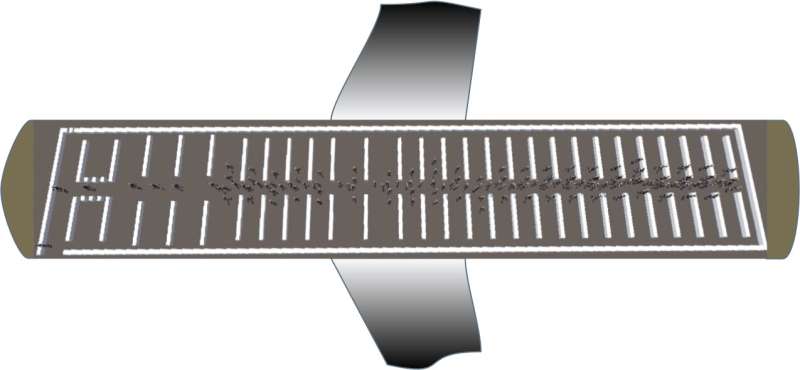Boarding back-to-front on planes increases COVID-19 infection risk

A team of researchers from the University of West Florida, Florida State University and Embry-Riddle Aeronautical University has found that boarding airplane passengers from back to front increases their risk of a COVID-19 infection compared to random boarding. In their paper published in the journal Royal Society Open Science, the group describes simulations they created to study the dynamics of passenger plane loading during the pandemic.
As infection rates and deaths due to the pandemic have fallen in the U.S. and vaccination levels have increased, airlines have changed some of their procedures to entice people to resume traveling by air. One change is boarding people back to front of the plane rather than randomly. The thinking has been that if people are seated from the back of the plane to the front, none of them will have to pass by others who have already boarded. With the traditional random boarding, passengers wind up walking past one another, potentially infecting those along the way. In this new effort, which is part of the Viral Infection Propagation Through Air Travel program, the researchers created a host of simulations to test out this boarding theory.
The simulations, which included 16,000 possible passenger movements, revealed that boarding from back to front was actually much worse than random boarding. This is due to human nature: The researchers found that if passengers boarded in the back first, they tended to form clusters as they dealt with putting their luggage into overhead bins. The clustering occurred, the researchers found, because the passengers were all trying to stow their luggage in the same part of the plane at the same time. A closer look showed using the back-to-front approach increased exposure to infection by approximately 50%. The researchers note that prior studies involving transmission of the Ebola virus on airplanes showed clustering in the aisles to be the greatest risk factor.
Source: Read Full Article


